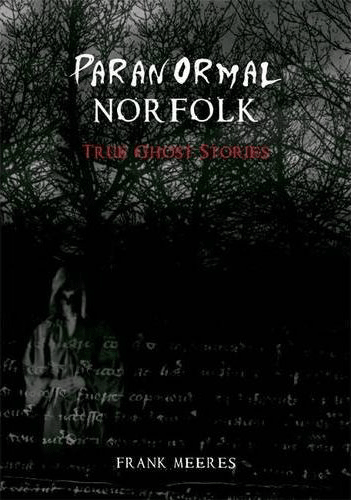
Paranormal Norfolk
by Frank Meeres
Published by Amberley Publishing.
RRP £12.99
Although another one from the Paranormal Somewhere stable, this book does things slightly differently from others I have read. Ok, it does contain the usual collection of regional tales placed in appropriate chapters, but this author also uses a wealth of information from local record archives as supporting evidence. This is demonstrated throughout the book, but particularly in the final chapter - a lengthy report on the case of The Ghost of Syderstone Parsonage. Mr Meeres draws on newspaper articles, witness testimonies and letters to give an extensive insight into and his own analysis of the reports of poltergeist activity at the property in the 1830s.
The opening chapter takes a look at vampires Ė primarily linking the influential horror writer John Polidori with the city of Norwich. Here he practised medicine in the early 19th century and may well have taken inspiration from the area when writing his most famous work, short story The Vampyre.
Another famous visitor to this fine county was Sir Arthur Conan Doyle, and it is said that this is where the plot of one of his most famous stories was conceived. Without giving too much away dear reader, this theory can be found in the chapter on black dogs (!): these beasts being well known phenomena across East Anglia, where the name Black Shuck is widely used.
No book about Norfolk ghosts would be complete without retelling the famous stories from Raynham and Blickling Halls, and this one doesnít disappoint. The Brown Lady (of Raynham Hall) sightings are amongst my favourites and although I donít believe that the author offers anything new on the subject, they are well narrated. Thereís also that much-publicised photograph which, since taken has been the source of much debate. Towards the north east of the county lies another grand property - the beautiful stately home of Blickling Hall. Anne Boleyn, her father Sir Thomas, and their (headless!) horses are said to haunt the house, and its grounds.
Local historian W.H. Cooke was a collector of paranormal stories, and a selection of these along with accompanying sketches by Cooke can be found in a dedicated chapter. Other areas which the book explores include witches and the legendary Babes in the Wood ballad, first published in 1595.
As a lover of ghostly tales I enjoyed reading this book, though it probably helps that I know the area well. It was also refreshing to have that extra information from local records to digest, which has obviously entailed a great deal of research.
On the downside, I thought that the Syderstone parsonage chapter was too long, filling approximately a fifth of the pages. It is interesting to see how much correspondence was generated at the time of the case though I do question whether todayís casual reader would care for so much detail, especially as some of it did seem rather repetitive.
This book will, as per usual, be of particular interest to local people or those connected with the area. Norfolk is a popular tourist destination and Iím sure this book will also appeal to those looking for a less conventional holiday memento...
Review by Paul Collins


